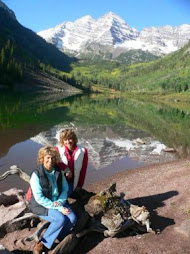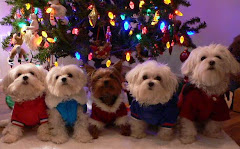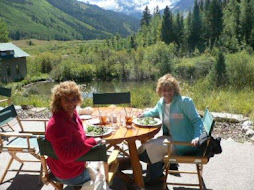Water – In Bishkek the tap water is generally safe to drink, but if you have a delicate stomach, or are concerned then boil the water. In rural regions – especially in the south – there are concerns about drinking water and it might be better to consider drinking mineral water. Bottled mineral water is available throughout the country but tends to be carbonated and a little salty, and can be an acquired taste.
Bread – In Bishkek there is a wide range of breads available. Outside the cities, the flat, round lepyoshka is found almost everywhere. Fresh, warm, straight from the tandoor (a clay oven) it is particularly pleasant. At meals it is usually broken, not cut with a knife and never placed on the table upside down.
Boorsok – pieces of dough, deep fried in boiling oil – is a traditional table “decoration”. They are produced in large quantities and spread over the dastorkan or table at every major celebration. An abundance of Boorsok is seen as a sign of generosity.
Kalama – a flat, unleavened bread – there is no yeast used in the mixture – baked quickly on the top of an iron stove. This is the most common sort of bread eaten in the yurts in the mountain pastures – the jailoo.
Kattama – another form of unleavened bread that is baked especially when there are guests. The dough is rolled into a thin layer and greased with butter and rolled to a spiral creating layers and baked on a hot iron stove.
Kuimak – liquid dough is fried in warm oil – and is eaten with sour cream.
Meat - The most common form of meat is used in Kyrgyz cuisine is mutton. Sheep have a high place in Kyrgyz culture and the Kyrgyz use every part of the animal for something. Sheep meat tends to have more fat than that from other animals, and so it should be no surprise that fatty meat is often considered to be the best. (There is even a Kyrgyz saying – “Cheap mutton has little fat”). In some households and festivals the Sheep's head, (the eyes in particular), may be offered to an honoured guest. Horsemeat is also highly revered and for special occasions and funerals it is common for a horse to be slaughtered and the cooked and presented to guests. Only young mares are used which have been fed on Alpine grasses, which are thought to give the meat a particularly good flavour. A great favourite in the countryside, (but also available in Bishkek) is chuchuk - a sort of sausage made from horsemeat. Beef is also found, but less often. Chicken is rarely used by the Kyrgyz – chickens being found among settled peoples rather than nomads. Pork is not used by the Kyrgyz, but can be found in Chinese and Russian restaurants.
Fish – Fresh fish are caught in the lakes such as Son-Kul and Issyk Kul. Popular are the dried and smoked fish that are sold by the roadside near Issyk-Kul .
Fruit and Vegetables – most of the produce is grown locally and seasonal and there is a wide variety – although recently more exotic fruits and vegetables are imported and available in the markets. You can encounter fresh produce, cooked, dried and preserved (jams/pickles etc.) Nuts are also very popular. In the South – look out for Walnut Jam, made from the fruit of the tree while it is still green – before the husk has formed – actually the “walnut fruit” is whole and in a sweet syrup rather than a thick jam.
Bread – In Bishkek there is a wide range of breads available. Outside the cities, the flat, round lepyoshka is found almost everywhere. Fresh, warm, straight from the tandoor (a clay oven) it is particularly pleasant. At meals it is usually broken, not cut with a knife and never placed on the table upside down.
Boorsok – pieces of dough, deep fried in boiling oil – is a traditional table “decoration”. They are produced in large quantities and spread over the dastorkan or table at every major celebration. An abundance of Boorsok is seen as a sign of generosity.
Kalama – a flat, unleavened bread – there is no yeast used in the mixture – baked quickly on the top of an iron stove. This is the most common sort of bread eaten in the yurts in the mountain pastures – the jailoo.
Kattama – another form of unleavened bread that is baked especially when there are guests. The dough is rolled into a thin layer and greased with butter and rolled to a spiral creating layers and baked on a hot iron stove.
Kuimak – liquid dough is fried in warm oil – and is eaten with sour cream.
Meat - The most common form of meat is used in Kyrgyz cuisine is mutton. Sheep have a high place in Kyrgyz culture and the Kyrgyz use every part of the animal for something. Sheep meat tends to have more fat than that from other animals, and so it should be no surprise that fatty meat is often considered to be the best. (There is even a Kyrgyz saying – “Cheap mutton has little fat”). In some households and festivals the Sheep's head, (the eyes in particular), may be offered to an honoured guest. Horsemeat is also highly revered and for special occasions and funerals it is common for a horse to be slaughtered and the cooked and presented to guests. Only young mares are used which have been fed on Alpine grasses, which are thought to give the meat a particularly good flavour. A great favourite in the countryside, (but also available in Bishkek) is chuchuk - a sort of sausage made from horsemeat. Beef is also found, but less often. Chicken is rarely used by the Kyrgyz – chickens being found among settled peoples rather than nomads. Pork is not used by the Kyrgyz, but can be found in Chinese and Russian restaurants.
Fish – Fresh fish are caught in the lakes such as Son-Kul and Issyk Kul. Popular are the dried and smoked fish that are sold by the roadside near Issyk-Kul .
Fruit and Vegetables – most of the produce is grown locally and seasonal and there is a wide variety – although recently more exotic fruits and vegetables are imported and available in the markets. You can encounter fresh produce, cooked, dried and preserved (jams/pickles etc.) Nuts are also very popular. In the South – look out for Walnut Jam, made from the fruit of the tree while it is still green – before the husk has formed – actually the “walnut fruit” is whole and in a sweet syrup rather than a thick jam.
Common Food in Kyrgyzstan:
Beshbarmak - Perhaps the most typical Kyrgyz dish. The dish is meant to be eaten with the hands, not with a knife and fork! - "Besh" means five, and "barmak", finger. Beshbarmak is served when guests arrive and at almost any festive gathering. There is quite a ritual involved in preparing the meal. The simple version of the dish consists of noodles, which are mixed with boiled meat cut into tiny pieces and served with a medium spicy sauce. Bouillon is then poured over the mixture.
Generally, a sheep is slaughtered, butchered and boiled in a large “ kazan ” (a large round pot) for a couple of hours. The bones with the meat still on them are then distributed to the assembled gathering. The oldest people and honoured guests are presented with the choicest bones first of all. The guest of honour is presented with the head – and by tradition should have the sheep's eyes. To the “Alksakals” – old men – go the thigh bone (“jambash”) – to the older women goes the fat tail (“kuiruk”). The legs and shoulders are distributed to the young adults present – and the smaller bones are reserved for the daughter in law of the household. Some meat is diced and and mixed with boiled noodles.
It is often followed by Ak serke – a broth made from milk mixed with kefir – and is thought to help settle the stomach.
The recipes section has a couple of recipes for you to try at home!
Ashlam-foo – a spicy dish made with cold noodles, jelly, vinegar and eggs.
Chuchpara – a form of meat dumplings – minced meat, onion and spices in dough, boiled in a tasty broth, served hot in bowls and eaten with a spoon. Sour cream can be served as a dressing (see Pelmeni, below).
Blini – (a Russian dish), pancakes, rolled and filled with meat, tvorok (a sort of cottage cheese), or jam.
Chuchpara – a form of meat dumplings – minced meat, onion and spices in dough, boiled in a tasty broth, served hot in bowls and eaten with a spoon. Sour cream can be served as a dressing (see Pelmeni, below).
Jarkop – stewed meat cooked with onions, radish and noodles, placed on boiled pieces of dough. Kerchoo – meated cooked in a fire like a barbarque
Korut - small balls of cheese made from sheep milk – they are diluted with water to make a refreshing summer drink, Chalap, (although it may be an acquired taste).
Kuiruk Boor – a snack consisting of cooked bacon (actually it's sheep's fat – not pig meat) and liver sprinkled with herbs.
Kuurdak – can be prepared from either mutton or beef. The meat is fried with onion and spices and served on a plate garnished with herbs.
Laghman – (another Uzbek dish) – flat noodles cooked in a stew of tiny pieces of mutton, potatoes, carrots, onions and white radishes. A Russian version, minus the noodles, called Shorpo, can often be found.
Manti – steamed dumplings filled with shredded meat (or sometimes pumpkins), usually eaten with the fingers. A word of warning – watch out for the hot, liquid fat that can come squirting out from them. Also, sometimes the meat can be fatty, or gristle.
Olovo – a dish which is cooked for especially honoured guests consisting of sheep's lungs marinaded in a mix of milk, spices, salt and oil.
Oromo – This is not usually found in restaurants, but you may be served it by a Kyrgyz family. It can be prepared with meat, or as a vegetarian dish. Potatoes, onions and carrots are shredded and spread onto a mat of rolled out pastry, which is then rolled into a roulette and steamed in a special pan called a kazgan (In Kyrgyz “oromo” means “roulette”).
Pelmeni – a form of Russian ravioli which can be served in a bouillon (or broth) or without, and usually smetana (sour cream). The Kyrgyz version is called Chuchpara – and is a soup with dumplings which are filled with onions, meat and fat.
Piroshki – flat dough filled with meat, potatoes, cabbage or sometimes nothing at all – sold by street sellers.
Plov – (really an Uzbek dish) - rice mixed with boiled, or fried meat, onions and carrots (and sometimes other ingredients such as raisins), all cooked in a semi-hemispherical metal bowl called a kazan over a fire. Plov is a favourite dish in the South and is served to honoured guests – the meal is not considered over until it has been served.
Samsa – (Samsi in the plural) are baked meat dumplings often cooked in a tandoor (clay oven). Once again, be warned of the heat and the fatty juice that squirts out when you bite into one.
Shashlyk – or Kebabs – meat cubes on skewers cooked over the embers of burning twigs. Mutton is the meat usually used, but it is possible to find beef, chicken, liver and even pork shashlyk. The meat may simply be freshly sliced or may have been marinated overnight. Be warned, if the meat is mutton, then almost certainly one of the pieces on the skewer will be pure fat ... the dripping fat onto the burning embers is thought to enhance the taste). Shashlyk is usually served with a sprinkling of raw onion, vinegar and lepyoshki.
Beshbarmak - Perhaps the most typical Kyrgyz dish. The dish is meant to be eaten with the hands, not with a knife and fork! - "Besh" means five, and "barmak", finger. Beshbarmak is served when guests arrive and at almost any festive gathering. There is quite a ritual involved in preparing the meal. The simple version of the dish consists of noodles, which are mixed with boiled meat cut into tiny pieces and served with a medium spicy sauce. Bouillon is then poured over the mixture.
Generally, a sheep is slaughtered, butchered and boiled in a large “ kazan ” (a large round pot) for a couple of hours. The bones with the meat still on them are then distributed to the assembled gathering. The oldest people and honoured guests are presented with the choicest bones first of all. The guest of honour is presented with the head – and by tradition should have the sheep's eyes. To the “Alksakals” – old men – go the thigh bone (“jambash”) – to the older women goes the fat tail (“kuiruk”). The legs and shoulders are distributed to the young adults present – and the smaller bones are reserved for the daughter in law of the household. Some meat is diced and and mixed with boiled noodles.
It is often followed by Ak serke – a broth made from milk mixed with kefir – and is thought to help settle the stomach.
The recipes section has a couple of recipes for you to try at home!
Ashlam-foo – a spicy dish made with cold noodles, jelly, vinegar and eggs.
Chuchpara – a form of meat dumplings – minced meat, onion and spices in dough, boiled in a tasty broth, served hot in bowls and eaten with a spoon. Sour cream can be served as a dressing (see Pelmeni, below).
Blini – (a Russian dish), pancakes, rolled and filled with meat, tvorok (a sort of cottage cheese), or jam.
Chuchpara – a form of meat dumplings – minced meat, onion and spices in dough, boiled in a tasty broth, served hot in bowls and eaten with a spoon. Sour cream can be served as a dressing (see Pelmeni, below).
Jarkop – stewed meat cooked with onions, radish and noodles, placed on boiled pieces of dough. Kerchoo – meated cooked in a fire like a barbarque
Korut - small balls of cheese made from sheep milk – they are diluted with water to make a refreshing summer drink, Chalap, (although it may be an acquired taste).
Kuiruk Boor – a snack consisting of cooked bacon (actually it's sheep's fat – not pig meat) and liver sprinkled with herbs.
Kuurdak – can be prepared from either mutton or beef. The meat is fried with onion and spices and served on a plate garnished with herbs.
Laghman – (another Uzbek dish) – flat noodles cooked in a stew of tiny pieces of mutton, potatoes, carrots, onions and white radishes. A Russian version, minus the noodles, called Shorpo, can often be found.
Manti – steamed dumplings filled with shredded meat (or sometimes pumpkins), usually eaten with the fingers. A word of warning – watch out for the hot, liquid fat that can come squirting out from them. Also, sometimes the meat can be fatty, or gristle.
Olovo – a dish which is cooked for especially honoured guests consisting of sheep's lungs marinaded in a mix of milk, spices, salt and oil.
Oromo – This is not usually found in restaurants, but you may be served it by a Kyrgyz family. It can be prepared with meat, or as a vegetarian dish. Potatoes, onions and carrots are shredded and spread onto a mat of rolled out pastry, which is then rolled into a roulette and steamed in a special pan called a kazgan (In Kyrgyz “oromo” means “roulette”).
Pelmeni – a form of Russian ravioli which can be served in a bouillon (or broth) or without, and usually smetana (sour cream). The Kyrgyz version is called Chuchpara – and is a soup with dumplings which are filled with onions, meat and fat.
Piroshki – flat dough filled with meat, potatoes, cabbage or sometimes nothing at all – sold by street sellers.
Plov – (really an Uzbek dish) - rice mixed with boiled, or fried meat, onions and carrots (and sometimes other ingredients such as raisins), all cooked in a semi-hemispherical metal bowl called a kazan over a fire. Plov is a favourite dish in the South and is served to honoured guests – the meal is not considered over until it has been served.
Samsa – (Samsi in the plural) are baked meat dumplings often cooked in a tandoor (clay oven). Once again, be warned of the heat and the fatty juice that squirts out when you bite into one.
Shashlyk – or Kebabs – meat cubes on skewers cooked over the embers of burning twigs. Mutton is the meat usually used, but it is possible to find beef, chicken, liver and even pork shashlyk. The meat may simply be freshly sliced or may have been marinated overnight. Be warned, if the meat is mutton, then almost certainly one of the pieces on the skewer will be pure fat ... the dripping fat onto the burning embers is thought to enhance the taste). Shashlyk is usually served with a sprinkling of raw onion, vinegar and lepyoshki.

























No comments:
Post a Comment